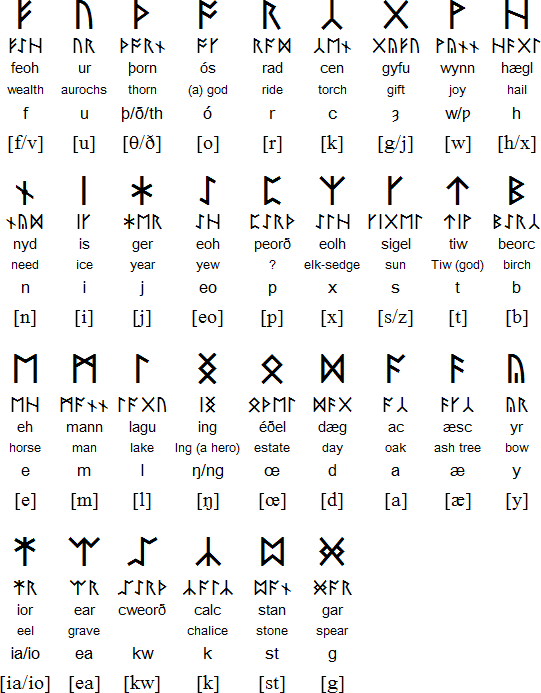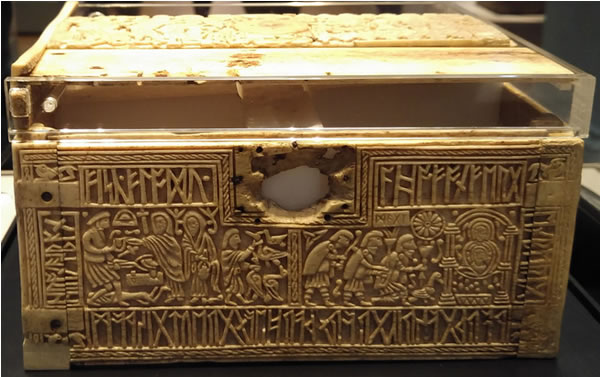(ᚠᚢᚦᚩᚱ/Futhorc/Fuþorc)
Anglo-Saxon runes are an extended version of Elder Futhark consisting of between 26 and 33 letters. It is thought that they were used to write Old English / Anglo-Saxon and Old Frisian from about the 5th century AD. They were used in England until the 10th or 11th centuries, though after the 9th century they were mainly used in manuscripts and were of interest to antiquarians, and their use ceased after the Norman conquest in 1066.One theory is that this script was developed in Frisia and then adopted in England. Another is that it was brought to England by the Vikings and then modified and later ended up in Frisia.
From the 7th century the Latin alphabet began to replace these runes, though some runes continued to appear in Latin texts representing whole words, and the Latin alphabet was extended with the runic letters þorn and wynn.
Anglo-Saxon runes (Futhorc/Fuþorc)

Download this alphabet chart (Excel speadsheet)
Sample text

Transliteration
fisc flodu ahof on fergenberigwarþ gasric grorn þær he on greut giswom
hronæs ban
Translation
The fish beat up the sea(s) on to the mountainous cliffThe king of ?terror became sad when he swam onto the grit.
Whale's bone
The inscription is a riddle with the answer whale's bone, which is what the casket is made of.
From the Franks Casket
Links
Information about the Runic alphabetshttp://en.wikipedia.org/wiki/Futhorc
Convert English in the Latin alphabet to Anglo-Saxon Runes
http://futhorc.com/runic.asp
Anglo-Saxon Runic fonts
http://www.babelstone.co.uk/Fonts/AngloSaxon.html
No comments:
Post a Comment
Note: Only a member of this blog may post a comment.